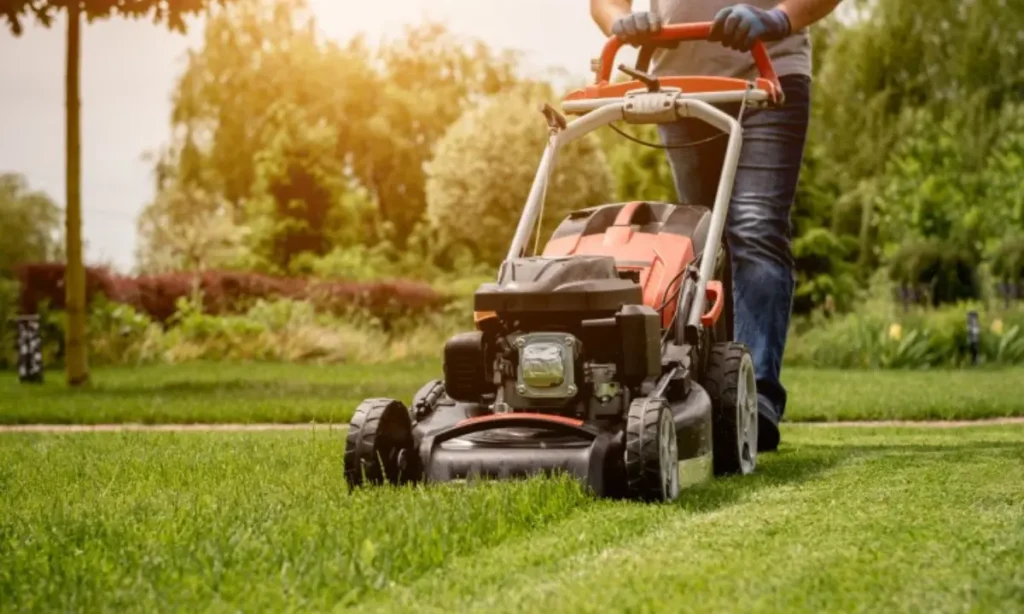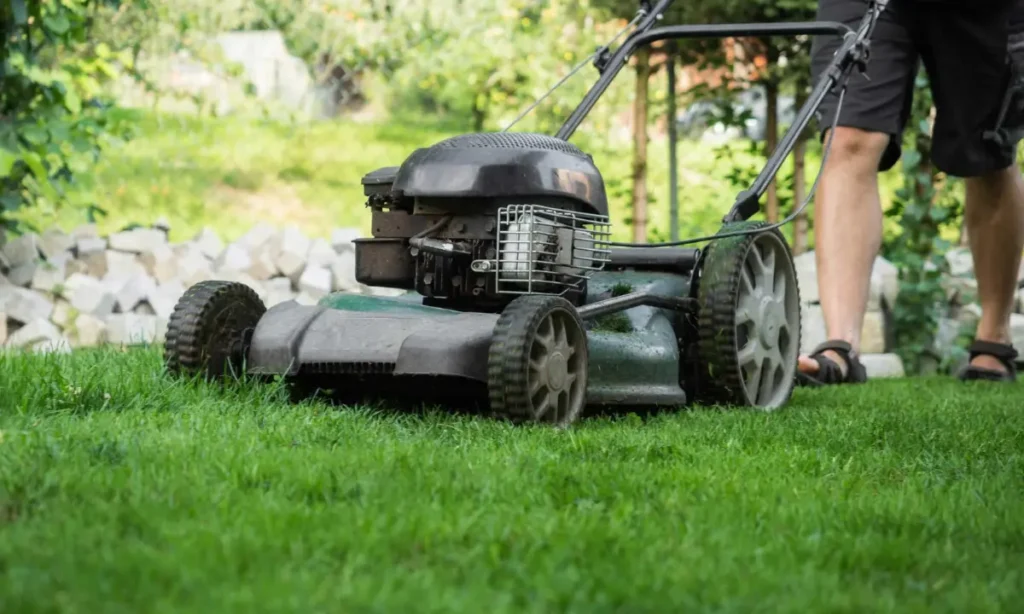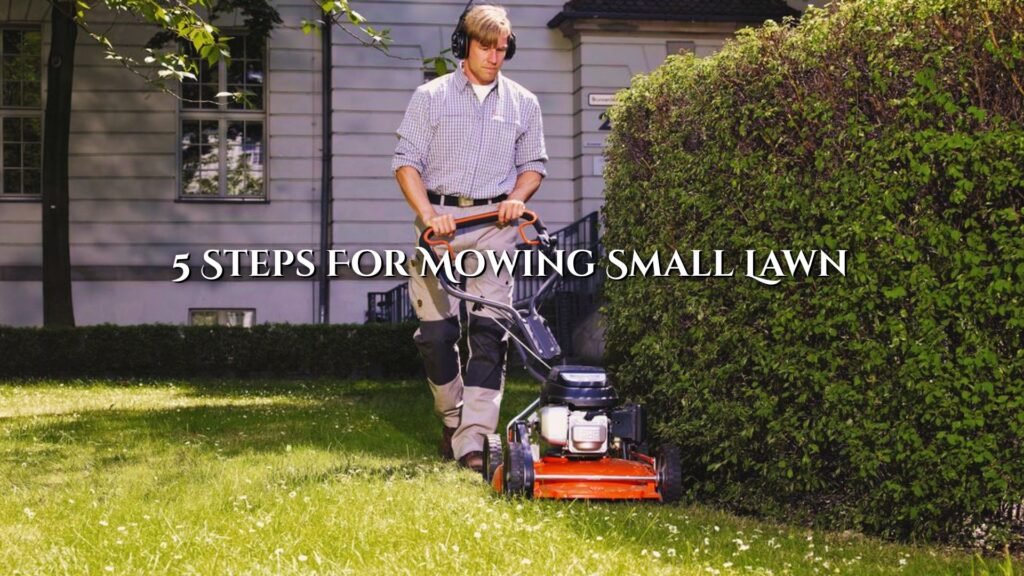Mowing a small lawn may sound like a difficult task, but any job can be performed easily only if done in the right way. Whether you’re cutting grass with the kind of old-school mower or wondering how to cut grass without a mower, it can make a big difference what you do with your lawn. In this guide, we will show you the essential tips on how to mow a small lawn so that you’ll have the gear and the smarts to get a perfect short-cut lawn.
Steps to Take to Mow a Small Lawn Like a Pro

Lawn care, in 2025, is different. But now that more and more people are gardening for low-maintenance lawns. Even small lawns can realize the benefits of smart mowing that saves time, work, and resources. “Quick cuts lawn care” techniques are becoming increasingly popular, whether you’re cutting grass with a hand trimmer or a dedicated lawnmower. Here are the pro tips for a quicker and more budget-friendly grass cut.
Step 1: Select the Best Mower for Your Grass
Choosing the right mower for your lawn is important to keep a well-maintained lawn. Also, think about things like how to cut grass, how big your lawn is, and how much work you want to put into the process, as well as your budget. The following are the most typical:
- Push Mowers: Great for small lawns, cost-efficient, and easy to use! They are manual, electric, and gas-powered, with self-propelled models for convenience.
- Riding Mowers: Great for any medium to large-sized lawn, riding mowers are comfortable to use and efficient, decked out with accessories like mulching kits and tow-behind ATV trailers.
- Robotic Mowers: For a small to medium lawn, robotic, autonomous mowers make for a low-maintenance solution with quiet operation and predictable results for mowing a small lawn.
Result: You have saved time, energy, and perhaps even money. And, these mowers deliver a cleaner, healthier cut compared to larger gas-powered counterparts.
Pro Tip: If you’re looking for ways to cut grass without a lawnmower, garden shears or a grass trimmer can work, too. It’s more work, but it can be a thorough way to go if you’re working with patches or places the mower can’t reach.
Step 2. Time Your Mowing Properly
Timing is everything when it comes to mowing – and you have the power to prevent grass stress and encourage good growth:
- Don’t Mow in the Heat of the Day: To avoid heat stress on the grass, mow in the early morning or the late afternoon.
- Don’t Mow Wet Grass: Wet grass clumps up and causes uneven cutting and mower damage. Mow after the grass has had time to dry.
- Mow at the Right Temperature: When it comes to the cooler seasons, don’t mow too early in the morning or too late in the evening, as the frost can damage the grass.
Result: Most lawns should be 2.5 to 4 inches when you cut them. The right grass length allows your lawn to thrive and look its best.
Step 3: Keep Your Mower Blades Sharp
Keep your mower blades sharp to guarantee clean cuts. Moreover, always cut to the desired height. Following the
- 1/3 Rule: Never removing more than 1/3 of the grass blade at a time — is also important for the health of your grass
- Right Mowing Heights: Every type of grass has an appropriate height when it meets the mower blade, which can vary from 1 inch to 4 inches (depending on whether it is a warm or cool season type).
Result: A sharp blade means jagged edges that can stress the grass.
Step 4: Mow in Different Directions
Oscillating the direction in which you mow prevents soil compaction, prevents undue wear, and ensures a more uniform lawn. Moreover, when you mow dry grass, the grass stems will be cut more cleanly and efficiently, there will be less chance of compacting the soil, and the chances of spreading diseases will be minimized:
- Mow and Change Direction: For instance, mow the property horizontally the first week and vertically or diagonally the next week. This promotes grass to stand up and grow evenly.
- Stay off wet grass: It’s difficult to mow on wet grass as it tends to clump and stick on the mower, and you run the risk of damaging your mower. You should always try to avoid mowing a wet lawn to achieve the best cut.
Action: Mow in a different direction every time you mow your small lawn.
Result: This keeps the grass from leaning in one direction and maintains an even cut.
Step 5. Standard Maintenance on Mower
Maintenance is key to getting your lawn mower through the season without any problems.
- Sharpen or Change the Blades: If your blades are dull, they are ripping up your grass as opposed to cutting it. This makes it more likely for your lawn to get diseases. Your blades will need to be sharpened or replaced frequently.
- Clean the Deck: Removing grass clippings and dirt after each cutting will help reduce rust and corrosion.
- Change the Oil: Regularly lubricating the engine parts keeps the system in good running condition. Change the oil regularly. After a long ride or repeated use, be sure to change your engine’s oil.
- Change the Spark Plugs: Dirty plugs can result in sluggish engine operation. Inspect and replace as described in the manual.
- Check the Fuel System: Fresh fuel without ethanol, along with new fuel lines, will safeguard against engine damage.
Result: A robust lawn will fend off weeds and remain greener longer.
Use These Tips to Take Care of Your Small Lawn

The majority of big lawn care services suggest that mowing once a week is ideal, but this is a one-size-fits-all estimate. The truth is, the frequency of mowing should be based on your lawn’s growth rate. For a small lawn, you might be able to mow every 10-14 days during the growing season.
Let’s assume you are a homeowner and your yard is a modest 500 square feet. You’ve been mowing with a gas-powered machine, but maneuvering has become difficult, and you just can’t stand how long it takes. However, switch to a lightweight electric mower and cut your lawn once in 10 days, and you can reduce mowing time by 30% while improving the health of your lawn.
Conclusion:
Mowing a modest lawn doesn’t have to be a chore. With the right tools and these essential mowing tips, you can easily follow through with a garden full of healthy, beautiful grass. Make the right choice of tools to set a proper mowing height, and by following the essential mowing tips, you can cut grass with enjoyment and at the same time keep a healthy, beautiful lawn. And keep in mind, lawn care is as much about smart choices as about hard work.
FAQ’s
A: Mow once every 7-14 days, depending on how quickly the grass grows. For small lawns, too often mowing can stress the grass out, but let it go too long, and your yard could become unruly.
A: Yes! If you can cut the grass with garden shears, a string trimmer, or even a scythe for small patches of yard.
A: If you have a small lawn you want to mow, go with a manual reel mower or a push electric model that requires little in the way of maintenance and expense.
A: Mow at the right height, water deeply, and fertilize spring and fall to promote a thick lawn. With a healthy, thick lawn, weeds aren’t able to penetrate.



